- Home
- J. K. Rowling
Hogwarts: An Incomplete and Unreliable Guide (Kindle Single) (Pottermore Presents)
Hogwarts: An Incomplete and Unreliable Guide (Kindle Single) (Pottermore Presents) Read online
The digital heart
of the Wizarding World
www.pottermore.com
CONTENTS
CHAPTER ONE: THE JOURNEY TO HOGWARTS
King’s Cross Station
Platform Nine and Three-Quarters
The Hogwarts Express
CHAPTER TWO: THE SORTING
The Sorting Hat
Hatstall
CHAPTER THREE: THE CASTLE AND GROUNDS
Hufflepuff Common Room
The Marauder’s Map
The Great Lake
CHAPTER FOUR: LESSONS AT HOGWARTS
Hogwarts School Subjects
Time-Turner
CHAPTER FIVE: CASTLE RESIDENTS
Hogwarts Ghosts
Ghosts
The Ballad of Nearly Headless Nick
Hogwarts Portraits
Sir Cadogan
CHAPTER SIX: SECRETS OF THE CASTLE
Mirror of Erised
Pensieve
The Philosopher’s Stone
The Sword of Gryffindor
The Chamber of Secrets
FROM THE POTTERMORE EDITOR:
We know quite a lot about Hogwarts. It’s a school for witches and wizards, who are invited to attend by an owl-delivered letter. It has a hundred and forty-two staircases, which move as though they have minds of their own. It was founded by Godric Gryffindor, Rowena Ravenclaw, Helga Hufflepuff and Salazar Slytherin, after whom the school’s houses were named.
There’s even a secret passageway under a one-eyed witch statue that allows a fairly thin person to escape into the cellar of Honeydukes. But if Professor Albus Percival Wulfric Brian Dumbledore says even he doesn’t know all of Hogwarts’ secrets, well, neither do we.
There’s only one person who knows everything about Hogwarts. In this collection of writing, J.K. Rowling divulges hidden secrets and strange lore from Britain’s school for witchcraft and wizardry.
We begin just as any witch or wizard on his or her way to Hogwarts would – at London’s King’s Cross. It’s a bustling, cavernous train station filled with busy commuters – so busy that they don’t notice people laden with trunks, owls, cats and robes run at a ticket barrier and disappear.
KING’S CROSS STATION
BY J.K. ROWLING
When Ottaline Gambol commandeered a Muggle train to serve as the new mode of transport for Hogwarts students, she also had constructed a small station in the wizarding village of Hogsmeade: a necessary adjunct to the train. The Ministry of Magic felt strongly, however, that to construct an additional wizarding station in the middle of London would stretch even the Muggles’ notorious determination not to notice magic when it was exploding in front of their faces.
It was Evangeline Orpington, Minister from 1849–1855, who hit upon the solution of adding a concealed platform at the newly (Muggle) built King’s Cross station, which would be accessible only to witches and wizards. On the whole, this has worked well, although there have been minor problems over the ensuing years, such as witches and wizards who have dropped suitcases full of biting spellbooks or newt spleens all over the polished station floor, or else disappeared through the solid barrier a little too loudly. There are usually a number of plain-clothed Ministry of Magic employees on hand to deal with any inconvenient Muggle memories that may need altering at the start and end of each Hogwarts term.
J.K. Rowling’s thoughts
King’s Cross, which is one of London’s main railway stations, has a very personal significance for me, because my parents met on a train to Scotland which departed from King’s Cross station. For this reason, and because it has such an evocative and symbolic name, and because it is actually the right station to leave from if you were heading to Caledonia, I never knew the slightest indecision about the location of the portal that would take Harry to Hogwarts, or the means of transport that would take him there.
It is said (though where the story originated I could not tell you; it is suspiciously vague) that King’s Cross Station was built either on the site of Boudicca’s last battle (Boudicca was an ancient British queen who led a rebellion against the Romans) or on the site of her tomb. Legend has it that her grave is situated somewhere in the region of platforms eight to ten. I did not know this when I gave the wizards’ platform its number. King’s Cross station takes its name from a now-demolished monument to King George IV.
There is a real trolley stuck halfway out of a wall in King’s Cross now, and it makes me beam proudly every time I pass...
There is no doubt that a train from King’s Cross is the most reliable way to get a young witch or wizard to Hogwarts (flying cars are strongly discouraged). But why platform nine and three-quarters? And what other hidden platforms might be tucked away behind those walls?
PLATFORM NINE
AND THREE-QUARTERS
J.K. Rowling’s thoughts
In choosing the number of the concealed platform that would take young witches and wizards to boarding school, I decided that it would have to be a number between those of the Muggle platforms – therefore, it was clearly a fraction. This raised the interesting question of how many other fractional platforms lay between the whole-numbered platforms at King’s Cross, and I concluded that there were probably quite a few. Although these are never mentioned in the book, I like to think that it is possible to take a version of the Orient Express off to wizard-only villages in continental Europe (try platform seven and a half), and that other platforms may be opened on an as-required-basis, for instance for large, one-off events such as Celestina Warbeck concerts (see your ticket for details).
The number nine and three-quarters presented itself without much conscious thought, and I liked it so much that I took it at once. It is the ‘three-quarters’ that makes it, of course.
Next, it’s only logical to jump onto the Hogwarts Express, which fills with new and returning students of witchcraft and wizardry each year and drops them off at school.
THE HOGWARTS EXPRESS
BY J.K. ROWLING
As we know from early historical accounts, and from the evidence of early woodcuts and engravings, Hogwarts students used to arrive at school in any manner that caught their fancy. Some rode broomsticks (a difficult feat when carrying trunks and pets); others commandeered enchanted carts and, later, carriages; some attempted to Apparate (often with disastrous effects, as the castle and grounds have always been protected with Anti-Apparition Charms); others rode a variety of magical creatures.
(Indeed, it is believed that the Thestrals currently living in the Forbidden Forest, and trained to pull the school carriages from Hogsmeade Station, are descendants of those ridden by students to school long ago.)
In spite of the accidents attendant on these various modes of magical transport, not to mention the annual Muggle sightings of vast numbers of airborne wizards travelling northwards, it remained the responsibility of parents to convey their children to school, right up until the imposition of the International Statute of Secrecy in 1692. At this point, it became a matter of urgency to find some more discreet method of transporting hundreds of wizarding children from all over Britain to their secret school in the Highlands of Scotland.
Portkeys were therefore arranged at collecting points all over Britain. The logistics caused problems from the start. Up to a third of students would fail to arrive every year, having missed their time slot, or been unable to find the unobtrusive enchanted object that would transport them
to their school. There was also the unfortunate fact that many children were (and are) ‘Portkey-sick’, and the hospital wing was frequently full to bursting for the first few days of every year, while susceptible students overcame their hysterics and nausea.
While admitting that Portkeys were not an ideal solution to the problem of school transportation, the Ministry of Magic failed to find an acceptable alternative. A return to the unregulated travel of the past was impossible, and yet a more secure route into the school (for instance, permitting a fireplace that might be officially entered by Floo powder) was strongly resisted by successive Headmasters, who did not wish the security of the castle to be breached.
A daring and controversial solution to the thorny problem was finally suggested by Minister for Magic Ottaline Gambol, who was much intrigued by Muggle inventions and saw the potential in trains. Where exactly the Hogwarts Express came from has never been conclusively proven, although it is a fact that there are secret records at the Ministry of Magic detailing a mass operation involving one hundred and sixty-seven Memory Charms and the largest ever mass Concealment Charm performed in Britain. The morning after these alleged crimes, a gleaming scarlet steam engine and carriages astounded the villagers of Hogsmeade (who had also not realised they had a railway station), while several bemused Muggle railway workers down in Crewe spent the rest of the year grappling with the uncomfortable feeling that they had mislaid something important.
The Hogwarts Express underwent several magical modifications before the Ministry approved it for school use. Many pure-blood families were outraged at the idea of their children using Muggle transport, which they claimed was unsafe, insanitary and demeaning; however, as the Ministry decreed that students either rode the train or did not attend school, the objections were swiftly silenced.
First-year Hogwarts students are hustled into the Great Hall for the wizarding world’s most discerning personality test. As each young witch and wizard is called forward, an infinitely wise talking hat is placed on his or her head. We know what the Sorting Hat does, but how much do we know about how it was created?
THE SORTING HAT
BY J.K. ROWLING
The famous Hogwarts Sorting Hat gives an account of its own genesis in a series of songs sung at the beginning of each school year. Legend has it that the hat once belonged to one of the four founders, Godric Gryffindor, and that it was jointly enchanted by all four founders to ensure that students would be sorted into their eponymous houses, which would be selected according to each founder’s particular preferences in students.
The Sorting Hat is one of the cleverest enchanted objects most witches and wizards will ever meet. It literally contains the intelligence of the four founders, can speak (through a rip near its brim) and is skilled at Legilimency, which enables it to look into the wearer’s head and divine his or her capabilities or mood. It can even respond to the thoughts of the wearer.
The Sorting Hat has another ability, which has rarely been revealed to anyone at Hogwarts. It is a magical portal, by which another of Godric Gryffindor’s possessions may be accessed: the sword of Gryffindor. This sword was enchanted by Godric to appear whenever a member of his house asks for help while wearing the Hat. Twice, in the course of the Harry Potter series, the sword is transported from a temporary owner to aid a Gryffindor who needs a weapon.
The Sorting Hat is notorious for refusing to admit it has made a mistake in its sorting of a student. On those occasions when Slytherins behave altruistically or selflessly, when Ravenclaws flunk all their exams, when Hufflepuffs prove lazy yet academically gifted and when Gryffindors exhibit cowardice, the Hat steadfastly backs its original decision. On balance, however, the Hat has made remarkably few errors of judgement over the many centuries it has been at work.
J.K. Rowling’s thoughts
The Sorting Hat does not appear in my earliest plans for Hogwarts. I debated several different methods for sorting students (because I knew from early on that there would be four houses, all with very different qualities). The first was an elaborate, Heath Robinson-ish machine that did all kinds of magical things before reaching a decision, but I did not like it: it felt at once too complicated and too easy. Next I placed four statues of the four founders in the Entrance Hall, which came alive and selected students from the throng in front of them while the school watched. This was better, but still not quite right. Finally, I wrote a list of the ways in which people can be chosen: eeny meeny miny mo, short straws, chosen by team captains, names out of a hat – names out of a talking hat – putting on a hat – the Sorting Hat.
The Sorting Hat is very wise. But dividing the magical student population of Hogwarts into four houses is a difficult task. Sometimes the Sorting Hat gets stumped. It’s rare for the Hat to really take its time deciding where a student belongs, but there is a term for when it happens.
HATSTALL
BY J.K. ROWLING
An archaic Hogwarts term for any new student whose Sorting takes longer than five minutes. This is an exceptionally long time for the Sorting Hat to deliberate, and occurs rarely, perhaps once every fifty years.
Of Harry Potter’s contemporaries, Hermione Granger and Neville Longbottom came closest to being Hatstalls. The Sorting Hat spent nearly four minutes trying to decide whether it should place Hermione in Ravenclaw or Gryffindor. In Neville’s case, the Hat was determined to place him in Gryffindor: Neville, intimidated by that house’s reputation for bravery, requested a placing in Hufflepuff. Their silent wrangling resulted in triumph for the Hat.
The only true Hatstalls known personally to Harry Potter were Minerva McGonagall and Peter Pettigrew. The former caused the Hat to agonise for five and a half minutes as to whether Minerva ought to go to Ravenclaw or Gryffindor; the latter was placed in Gryffindor after a long deliberation between that house and Slytherin. The Sorting Hat, which is infamously stubborn, still refuses to accept that its decision in the case of the latter may have been erroneous, citing the manner in which Pettigrew died as (dubious) evidence.
Hogwarts is a magical, enchanting and grand labyrinth with dungeons and towers, a foul-tempered tree, a sprawling lake full of merpeople, and grounds that are home to magical creatures. Let’s start with a place Harry Potter never visited himself: the Hufflepuff Common Room, where the kind at heart rest their hard-working heads.
HUFFLEPUFF COMMON ROOM
BY J.K. ROWLING
The Hufflepuff common room is entered from the same corridor as the Hogwarts kitchens. Proceeding past the large still life that forms the entrance to the latter, a pile of large barrels is to be found stacked in a shadowy stone recess on the right-hand side of the corridor. The barrel two from the bottom, middle of the second row, will open if tapped in the rhythm of ‘Helga Hufflepuff’.* As a security device to repel non-Hufflepuffs, tapping on the wrong barrel, or tapping the incorrect number of times, results in one of the other lids bursting off and drenching the interloper in vinegar.
A sloping, earthy passage inside the barrel travels upwards a little way until a cosy, round, low-ceilinged room is revealed, reminiscent of a badger’s set. The room is decorated in the cheerful, bee-like colours of yellow and black, emphasised by the use of highly polished, honey-coloured wood for the tables and the round doors that lead to the boys’ and girls’ dormitories (furnished with comfortable wooden bedsteads, all covered in patchwork quilts).
A colourful profusion of plants and flowers seem to relish the atmosphere of the Hufflepuff common room: various cacti stand on wooden circular shelves (curved to fit the walls), many of them waving and dancing at passers-by, while copper-bottomed plant holders dangling amid the ceiling cause tendrils of ferns and ivies to brush your hair as you pass under them.
A portrait over the wooden mantelpiece (carved all over with decorative dancing badgers) shows Helga Hufflepuff, one of the four founders of Hogwarts School, toasting
her students with a tiny, two-handled golden cup. Small, round windows just level with the ground at the foot of the castle show a pleasant view of rippling grass and dandelions, and, occasionally, passing feet. These low windows notwithstanding, the room feels perennially sunny.
* The complexity or otherwise of the entrance to the common rooms might be said to give a very rough idea of the intellectual reputation of each house: Hufflepuff has an unchanging portal and requires rhythmic tapping; Slytherin and Gryffindor have doorways that challenge the would-be entrant about equally, the former having an almost imperceptible hidden entrance and a varying password, the latter having a capricious guardian and frequently changing passwords. In keeping with its reputation as the house of the most agile minds at Hogwarts, the door to the Ravenclaw common room presents a fresh intellectual or philosophical challenge every time a person knocks on it.
Nevertheless, it ought not to be concluded from the above that Hufflepuffs are dimwits or duffers, though they have been cruelly caricatured that way on occasion. Several outstanding brains have emerged from Hufflepuff House over the centuries; these fine minds simply happened to be allied to outstanding qualities of patience, a strong work ethic and constancy, all traditional hallmarks of Hufflepuff House.
J.K. Rowling’s thoughts

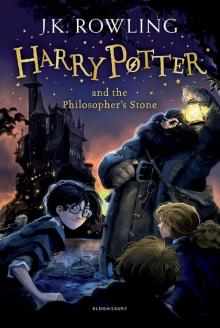 Harry Potter and the Philosophers Stone
Harry Potter and the Philosophers Stone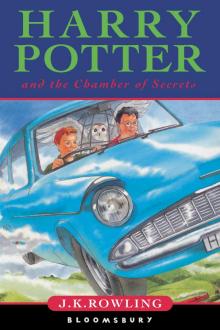 Harry Potter and the Chamber of Secrets
Harry Potter and the Chamber of Secrets Harry Potter and the Goblet of Fire
Harry Potter and the Goblet of Fire Harry Potter and the Deathly Hallows
Harry Potter and the Deathly Hallows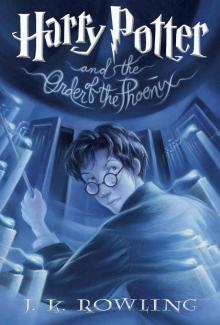 Harry Potter and the Order of the Phoenix
Harry Potter and the Order of the Phoenix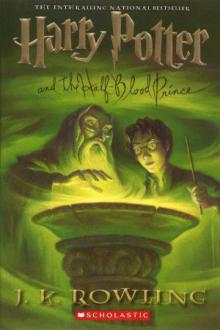 Harry Potter and the Half-Blood Prince
Harry Potter and the Half-Blood Prince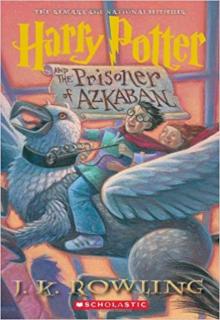 Harry Potter and the Prisoner of Azkaban
Harry Potter and the Prisoner of Azkaban Fantastic Beasts and Where to Find Them
Fantastic Beasts and Where to Find Them Short Stories from Hogwarts of Heroism, Hardship and Dangerous Hobbies
Short Stories from Hogwarts of Heroism, Hardship and Dangerous Hobbies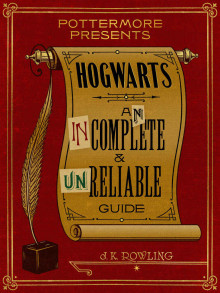 Hogwarts: An Incomplete and Unreliable Guide
Hogwarts: An Incomplete and Unreliable Guide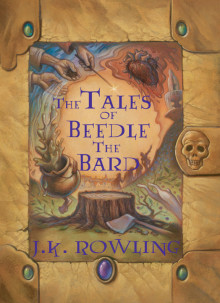 The Tales of Beedle the Bard
The Tales of Beedle the Bard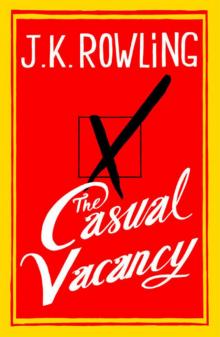 The Casual Vacancy
The Casual Vacancy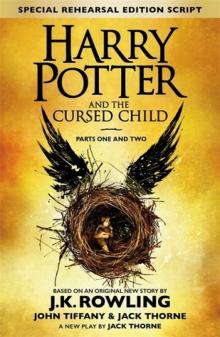 Harry Potter and the Cursed Child
Harry Potter and the Cursed Child Short Stories from Hogwarts of Power, Politics and Pesky Poltergeists
Short Stories from Hogwarts of Power, Politics and Pesky Poltergeists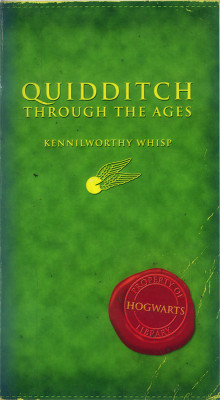 Quidditch Through the Ages
Quidditch Through the Ages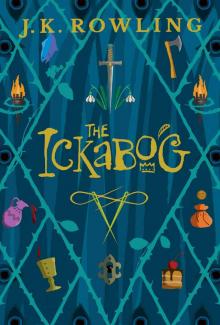 The Ickabog
The Ickabog![Fantastic Beasts, The Crimes of Grindelwald [UK] Read online](http://i1.bookreadfree.com/i/03/19/fantastic_beasts_the_crimes_of_grindelwald_uk_preview.jpg) Fantastic Beasts, The Crimes of Grindelwald [UK]
Fantastic Beasts, The Crimes of Grindelwald [UK]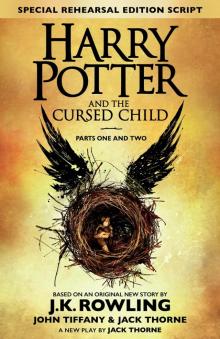 Harry Potter and the Cursed Child: Parts One and Two
Harry Potter and the Cursed Child: Parts One and Two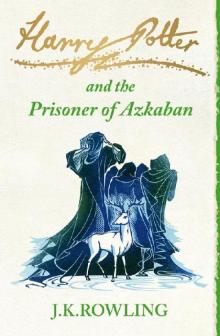 The Prisoner of Azkaban
The Prisoner of Azkaban Fantastic Beasts: The Crimes of Grindelwald
Fantastic Beasts: The Crimes of Grindelwald The Hogwarts Library Collection
The Hogwarts Library Collection Short Stories from Hogwarts of Heroism, Hardship and Dangerous Hobbies (Kindle Single) (Pottermore Presents)
Short Stories from Hogwarts of Heroism, Hardship and Dangerous Hobbies (Kindle Single) (Pottermore Presents)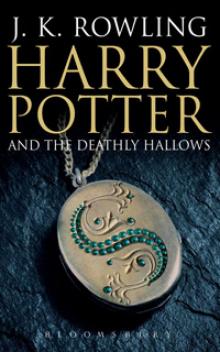 Harry Potter and the Deathly Hallows hp-7
Harry Potter and the Deathly Hallows hp-7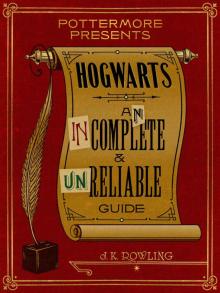 Hogwarts: An Incomplete and Unreliable Guide (Kindle Single) (Pottermore Presents)
Hogwarts: An Incomplete and Unreliable Guide (Kindle Single) (Pottermore Presents)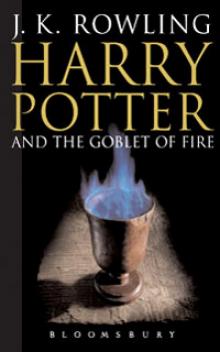 Harry Potter and the Goblet of Fire hp-4
Harry Potter and the Goblet of Fire hp-4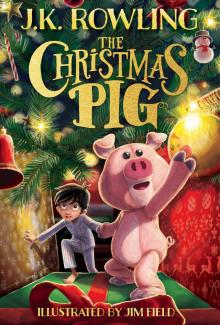 The Christmas Pig
The Christmas Pig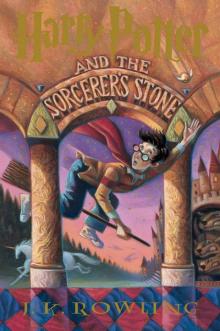 Harry Potter and the Sorcerer's Stone
Harry Potter and the Sorcerer's Stone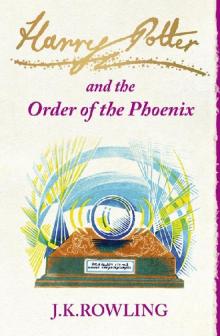 The Order of the Phoenix
The Order of the Phoenix Harry Potter and the Prisoner of Azkaban hp-3
Harry Potter and the Prisoner of Azkaban hp-3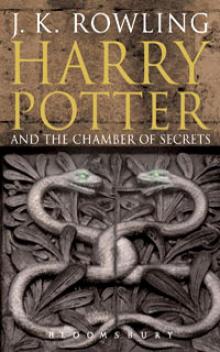 Harry Potter and the Chamber of Secrets hp-2
Harry Potter and the Chamber of Secrets hp-2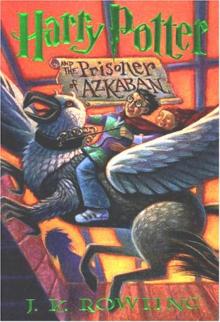 HP 3 - Harry Potter and the Prisoner of Azkaban
HP 3 - Harry Potter and the Prisoner of Azkaban The Half-Blood Prince
The Half-Blood Prince The Hogwarts Collection
The Hogwarts Collection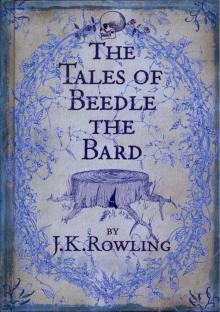 Tales of Beedle the Bard
Tales of Beedle the Bard The Goblet of Fire
The Goblet of Fire Harry Potter and the Half-Blood Prince hp-6
Harry Potter and the Half-Blood Prince hp-6 Short Stories from Hogwarts of Power, Politics and Pesky Poltergeists (Kindle Single) (Pottermore Presents)
Short Stories from Hogwarts of Power, Politics and Pesky Poltergeists (Kindle Single) (Pottermore Presents)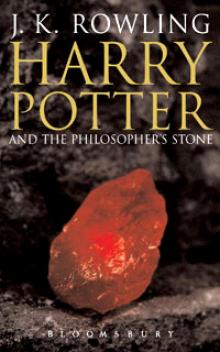 Harry Potter and the Sorcerer's Stone hp-1
Harry Potter and the Sorcerer's Stone hp-1